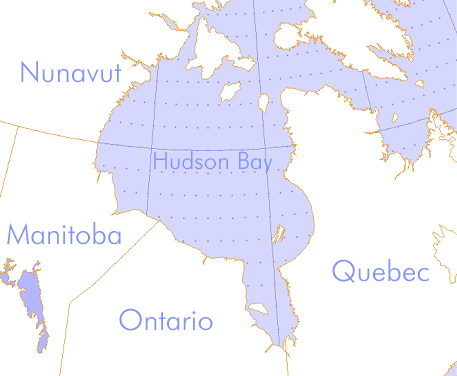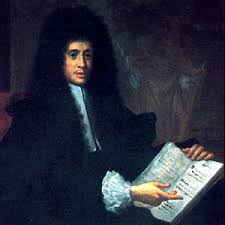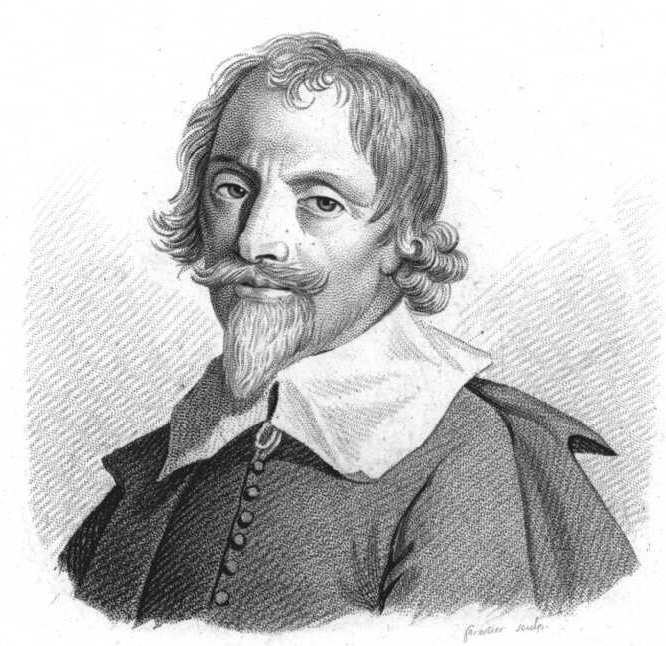|
Pierre Bourdelot
Pierre Michon Bourdelot (2 February 1610 in Sens – 9 February 1685) was a French physician, anatomist, libertine and freethinker. Life Bourdelot studied at the Sorbonne (1629) and travelled in 1634 to Rome in the company of count François de Noailles. In 1638 he came back to France and was appointed as the private doctor of the Condé family. In 1640 he founded the Académie Bourdelot, a circle for scientists, philosophers and authors, that came together twice a month. When his uncle died, he inherited a lot of books and manuscripts. When Louis II de Bourbon, prince de Condé, because of actions during the Fronde against Absolutism, was captured by Mazarin, he took off; in 1652 he was in Stockholm. Bourdelot took many manuscripts with him as a present. He had a lot of influence on her with his jokes and poems by Pietro Aretino. Within four weeks she seems to have been recovered and enjoying life. Magnus Gabriel de la Gardie and Christina's mother Maria Eleonora of Brandenb ... [...More Info...] [...Related Items...] OR: [Wikipedia] [Google] [Baidu] |
Sens
Sens () is a Communes of France, commune in the Yonne Departments of France, department in Bourgogne-Franche-Comté in north-central France, 120 km southeast from Paris. Sens is a Subprefectures in France, sub-prefecture and the second largest city of the department, the sixth largest in the region. It is crossed by the Yonne (river), Yonne and the Vanne (river), Vanne, which empties into the Yonne here. At the last census of 2021, the municipality had 27,034 inhabitants. Its inhabitants are called les ''Senonese'' in French. The city was rewarded with the distinction of Grand Prix et quatre fleurs in 2007 at Concours des villes et villages fleuris. Geography Sens is located at the extreme north-west of the Bourgogne-Franche-Comté, on the border of three regions, namely the Île-de-France, the Grand Est and the Centre-Val de Loire. Located on the course of the river Yonne (river), Yonne in the valley of the same name, the city is bordered by the hills of Paron, Yonne, ... [...More Info...] [...Related Items...] OR: [Wikipedia] [Google] [Baidu] |
Magnus Gabriel De La Gardie
Count Magnus Gabriel De la Gardie (15 October 1622 – 26 April 1686) was a Swedish Empire, Swedish statesman and military man. He became a member of the Privy Council of Sweden, Swedish Privy Council in 1647 and came to be the holder of three of the five offices counted as the Great Officers of the Realm, namely Lord High Treasurer of Sweden, Lord High Treasurer, Lord High Chancellor of Sweden, Lord High Chancellor and Lord High Steward of Sweden, Lord High Steward. He also served as Swedish Governors-General, Governor-General in the Swedish dominion of Swedish Livonia, Livonia. Birth and ancestry Magnus Gabriel De la Gardie was born on 15 October 1622. The place of his birth was Reval (present-day Tallinn), Swedish Estonia, Estonia, which at the time was a Swedish dominion where Magnus Gabriel's father Jacob De la Gardie served as governor. Jacob De la Gardie, Count of Läckö Castle, Läckö, was a prominent military commander who served as Lord High Constable of Sweden fro ... [...More Info...] [...Related Items...] OR: [Wikipedia] [Google] [Baidu] |
1685 Deaths
Events January–March * January 6 – American-born British citizen Elihu Yale, for whom Yale University in the U.S. is named, completes his term as the first leader of the Madras Presidency in India, administering the colony on behalf of the East India Company, and is succeeded by William Gyfford. * January 8 – Almost 200 people are arrested in Coventry by English authorities for gathering to hear readings of the sermons of the non-conformist Protestant minister Obadiah Grew * February 4 – A treaty is signed between Brandenburg-Prussia and the indigenous chiefs at Takoradi in what is now Ghana to permit the German colonists to build a third fort on the Brandenburger Gold Coast. * February 6 – Catholic James Stuart, Duke of York, becomes King James II of England and Ireland, and King James VII of Scotland, in succession to his brother Charles II (1660–1685), King of England, Scotland, and Ireland since 1660. James II and VII reigns ... [...More Info...] [...Related Items...] OR: [Wikipedia] [Google] [Baidu] |
1610 Births
Some have suggested that 1610 may mark the beginning of the Anthropocene, or the 'Age of Man', marking a fundamental change in the relationship between humans and the Earth system, but earlier starting dates (ca. 1000 C.E.) have received broader consensus, based on high resolution pollution records that show the massive impact of human activity on the atmosphere. Events January–March * January 6 – ''Nossa Senhora da Graça'' incident: A Portuguese carrack sinks near Nagasaki, after fighting Japanese samurai for four nights. * January 7 – Galileo Galilei first observes the four Galilean moons of Jupiter: Ganymede, Callisto, Europa and Io, but is unable to distinguish the latter two until the following day. * February 24 – English courtier Thomas Roe sets out on an expedition to The Guianas and Amazon River. * March 13 – Galileo Galilei's treatise on astronomy, ''Sidereus Nuncius'', the first printed scientific record of observations thro ... [...More Info...] [...Related Items...] OR: [Wikipedia] [Google] [Baidu] |
17th-century French Physicians
The 17th century lasted from January 1, 1601 (represented by the Roman numerals MDCI), to December 31, 1700 (MDCC). It falls into the early modern period of Europe and in that continent (whose impact on the world was increasing) was characterized by the Baroque cultural movement, the latter part of the Spanish Golden Age, the Dutch Golden Age, the French '' Grand Siècle'' dominated by Louis XIV, the Scientific Revolution, the world's first public company and megacorporation known as the Dutch East India Company, and according to some historians, the General Crisis. From the mid-17th century, European politics were increasingly dominated by the Kingdom of France of Louis XIV, where royal power was solidified domestically in the civil war of the Fronde. The semi-feudal territorial French nobility was weakened and subjugated to the power of an absolute monarchy through the reinvention of the Palace of Versailles from a hunting lodge to a gilded prison, in which a greatly expan ... [...More Info...] [...Related Items...] OR: [Wikipedia] [Google] [Baidu] |
Francesco Redi
Francesco Redi (18 February 1626 – 1 March 1697) was an Italians, Italian physician, naturalist, biologist, and poet. He is referred to as the "founder of experimental biology", and as the "father of modern parasitology". He was the first person to challenge the theory of spontaneous generation by demonstrating that maggots come from eggs of fly, flies. Having a doctoral degree in both medicine and philosophy from the University of Pisa at the age of 21, he worked in various cities of Italy. A rationalist of his time, he was a critic of verifiable myths, such as spontaneous generation. His most famous experiments are described in his Masterpiece, magnum opus ''Esperienze intorno alla generazione degl'insetti'' (''Experiments on the Generation of Insects''), published in 1668. He disproved that vipers drink wine and could break glasses and that their venom was poisonous when ingested. He correctly observed that snake venoms were produced from the fangs, not the gallbladder, as wa ... [...More Info...] [...Related Items...] OR: [Wikipedia] [Google] [Baidu] |
Joseph Guichard Duverney
Joseph Guichard Duverney or Joseph-Guichard Du Verney (; 5 August 1648 – 10 September 1730) was a French anatomist known for his work in comparative anatomy and for his treatise on the ear. The fracture of the iliac wing of the pelvis is sometimes called the Duverney fracture. Biography Du Verney was a native of Feurs in the province of Forez. His father Jacques Duverny was a doctor in the small community Feurs. His mother was born Antoinette Pittre. His two other older brothers studied medicine and he too studied at the University of Avignon, where in 1667 he obtained his medical degree. Shortly afterwards, he relocated to Paris where he was active in the circle of Abbé Pierre Michon Bourdelot where he came into contact with Claude Perrault. He became known for his assiduous anatomical dissections apart from dealing with patients. In 1676 he became the anatomist at the Royal Academy of Sciences to replace Louis Gayant (died 1673) and Jean Pecquet (died 1674). He be ... [...More Info...] [...Related Items...] OR: [Wikipedia] [Google] [Baidu] |
Nicolas Poussin
Nicolas Poussin (, , ; June 1594 – 19 November 1665) was a French painter who was a leading painter of the classical French Baroque style, although he spent most of his working life in Rome. Most of his works were on religious and mythological subjects painted for a small group of Italian and French collectors. He returned to Paris for a brief period to serve as First Painter to the King under Louis XIII and Cardinal Richelieu, but soon returned to Rome and resumed his more traditional themes. In his later years he gave growing prominence to the landscape in his paintings. His work is characterized by clarity, logic, and order, and favors line over color. Until the 20th century he remained a major inspiration for such classically-oriented artists as Jacques-Louis David, Jean-Auguste-Dominique Ingres and Paul Cézanne. Details of Poussin's artistic training are somewhat obscure. Around 1612 he traveled to Paris, where he studied under minor masters and completed his ea ... [...More Info...] [...Related Items...] OR: [Wikipedia] [Google] [Baidu] |
Gabriel Naudé
Gabriel Naudé (2 February 1600 – 10 July 1653) was a French librarian and scholar. He was a prolific writer who produced works on many subjects including politics, religion, history and the supernatural. In 1627, he published an influential book in the field of library science called ''Advice on Establishing a Library''. Naudé was later able to put into practice all the ideas he had put forth in ''Advice'' when he was given the opportunity to build and maintain the Bibliothèque Mazarine, the library of Cardinal Jules Mazarin at Paris. Naudé was a precursor of Pierre Bayle and Fontenelle. Biography Naudé was born in Paris in early 1600 to a family of modest means. His father was a lowly official and his mother a young illiterate woman. He was described by his teachers as tenacious and passionate about his education. Naudé entered college at a young age where he studied philosophy and grammar. Later he studied medicine at Paris and Padua (where he attended Cesare Cremoni ... [...More Info...] [...Related Items...] OR: [Wikipedia] [Google] [Baidu] |
Jacques Stella
Jacques Stella (1596 – 29 April 1657) was a French painter, a leading exponent of the neoclassical style of Parisian Atticism. Life Stella was born in Lyon. His father was François Stella, a painter and merchant of Flemish origin, but he died too soon to train Jacques in painting.Jacques Stella in the RKD Jacques's siblings were François the Younger and Madeleine (a sculptor and the mother of artists). He was the uncle of Antoinette Bouzonnet-Stella, Antoinette, Claudine Bouzonnet-Stella, Claudine, Françoise (a pastel artist) and Antoine Stella. Jacques Stella trained in Lyon before spending the period from 1616 to 1621 in the court of Cosimo II de Medici in Florence, working alongside Jacques Callot - Florentine art is a strong influence on all Stella's work. On Cosimo's death in 1621 Stella moved to Rom ... [...More Info...] [...Related Items...] OR: [Wikipedia] [Google] [Baidu] |
Maria Eleonora Of Brandenburg
Maria Eleonora of Brandenburg (11 November 1599 – 28 March 1655) was Queen of Sweden from 1620 to 1632 as the wife of King Gustav II Adolph (''Gustavus Adolphus''). She was born a German princess as the daughter of John Sigismund, Elector of Brandenburg, and Anna, Duchess of Prussia, daughter of Albert Frederick, Duke of Prussia. In 1620, Maria Eleonora married Gustavus Adolphus with her mother's consent, but against the will of her brother George William, Elector of Brandenburg, who had just succeeded her father. She bore her husband a daughter, Christina, in 1626, who later became the Queen of Sweden. Early life Born on 11 November 1599 in Königsberg, in the Duchy of Prussia, Maria Eleonora was the third child and second daughter of John Sigismund, Elector of Brandenburg, and his wife, Duchess Anna of Prussia, the Electress of Brandenburg. Marie Eleonores's maternal grandparents were Marie Eleonore of Cleves and Albert Frederick of Prussia, while her paternal grandpa ... [...More Info...] [...Related Items...] OR: [Wikipedia] [Google] [Baidu] |
Pietro Aretino
Pietro Aretino (, ; 19 or 20 April 1492 – 21 October 1556) was an Italian author, playwright, poet, satire, satirist and blackmailer, who wielded influence on contemporary art and politics. He was one of the most influential writers of his time and an outspoken critic of the powerful. He gained prominence through his politically charged writings and biting satire, which targeted powerful figures, including monarchs and popes. His works spanned various genres, including poetry, drama, and religious commentary, but he is particularly noted for his Parody, lampoons and erotic literature. Owing to his communications and sympathies with Reformation, religious reformers, he is considered to have been a Nicodemite Protestantism, Protestant. Aretino was a good friend and publicist of the Venetian artist Titian, who painted his portrait three times. Aretino is also remembered for an exchange of letters he had with Michelangelo concerning the latter's fresco ''The Last Judgment (Michel ... [...More Info...] [...Related Items...] OR: [Wikipedia] [Google] [Baidu] |






